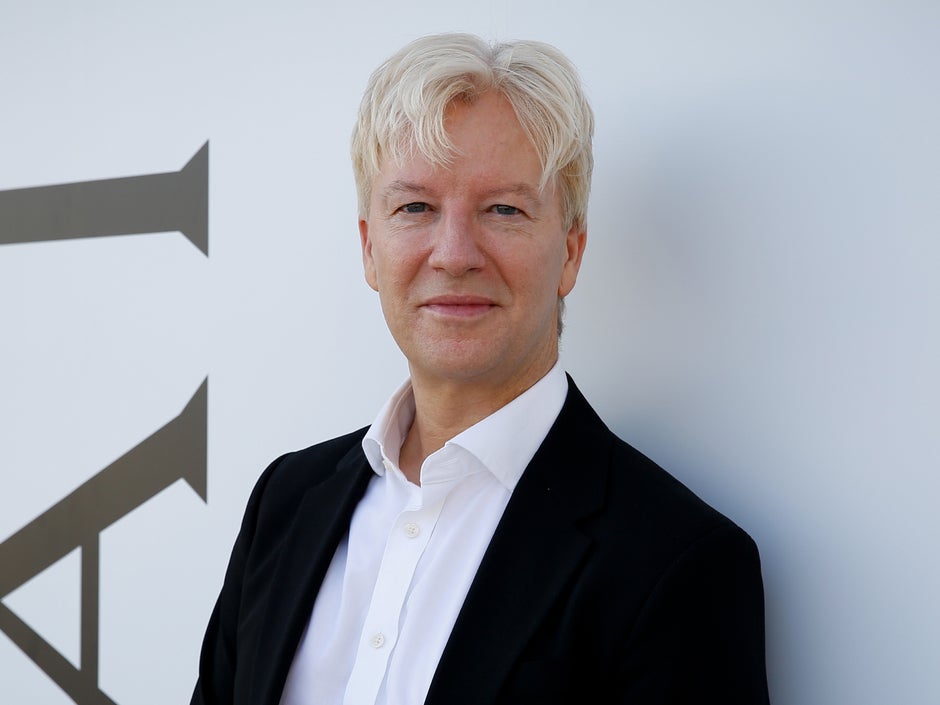
Shaping the future: Gerry Muhle on the technologies driving dermatology
Injectable aesthetics is one of the fastest-growing sub-segments in dermatology. And cutting-edge technology is primed to take aesthetics, and the dermatology segment, to the next level.
Injectable aesthetics is one of the fastest-growing sub-segments in dermatology. And while it is driven by various trends — read our NEXT by Galderma trailblazing trend report to learn more —cutting-edge technology is primed to take aesthetics, and the dermatology segment, to the next level.
Galderma’s Head of Global Product Strategy, Gerry Muhle, reveals how.
Q: How do you envision the role of technology in the future of dermatology?
Gerry Muhle: One of our priorities at Galderma is to identify approaching consumer and patient demands and to anticipate those needs. In our discovery of what trends lie ahead, we’re seeing that technology is a powerful tool with the ability to address those demands.
New technologies geared towards offering greater precision and experimentation across products and treatments are primed to reinvent the future, cultivating a ‘dermatology technology’ dimension within skincare. We’re already seeing artificial intelligence (AI) and augmented reality (AR) transforming approaches to beauty and skincare, and the dermatology technology landscape is only set to expand. In fact, the global AR and virtual reality (VR) cosmetic and beauty market is expected to grow at a compound annual growth rate (CAGR) value of 25.5% between now and 2027.
Q: What future trends have you identified that this technology speaks to?
GM: We’re living in an era in which people are feeling increasingly liberated to take ownership over their appearance. We’ve identified this cultural shift through research as part of Galderma’s NEXT trend report, which investigates what trends are set to characterize the future of aesthetics.
One emerging trend we’ve identified is ‘Expressionality’: now more than ever, individuals are looking to aesthetics as a form of self-expression. This interplay between self and visual presentation is growing. That goes hand-in-hand with another trend, ‘Cancelling Age,’ which reflects how more people wish to transcend expectations of what a certain age should look like, leading to greater “age fluidity” in many ways. The ‘Mindful Aesthetics’ trend is also increasingly relevant, as people are being drawn to natural-looking results and pushing back against artifice.
That’s another point where technology comes in. AI and AR work with users’ unique anatomy to provide personalized suggestions for how to highlight their natural features. At Galderma, we’re proactively building upon these tools to increase our global footprint in dermatology technology.
Q: What are some examples of these emerging technologies in use?
GM: Last year, Galderma released FACE by GaldermaTM, a treatment visualization app powered by AR. The app enables aesthetic practitioners and patients to simulate the outcomes of injectable treatments in real time, functioning as an easy-to-use consultation process. It enables patients to see the ‘after’ before they have a treatment, helping them make informed decisions. We’re excited to see the recent expansion FACE by GaldermaTM in Brazil and China, giving us leeway to develop dermatology technology within these dynamic markets.
AI is also becoming increasingly important to analyze skin and identify personalized skincare plans. In Dermatological Skincare, Galderma’s Cetaphil® has already leveraged technology with its AI Skin Analysis tool, which was launched in 2023. Using advanced AI assessment technology, this platform offers users precise assessments and personalized skincare plans based solely on a selfie. The highly engaging tool has launched in the U.S., Canada and Brazil, tallying 10,000 users per month.
Additionally, Galderma is utilizing VR to enable healthcare professionals to discover our manufacturing technology in the injectable aesthetics space. Through VR, healthcare professionals will be able to immerse themselves in Galderma’s facilities and verify the science and quality behind our treatments. We’re now in the process of launching headsets that will make these VR visits possible, driving increased transparency and trust through dermatology technology.
These sophisticated technologies are truly changing the game by giving patients and healthcare professionals a realistic understanding of what different products and treatments can offer on a personal basis. By showing an expansive range of possibilities, they also give patients the opportunity to better identify their skin goals.
Q: What does technology mean for the future of dermatology?
GM: Dermatology is, and will continue to be, an incredibly exciting space to play in. And by supporting individuals to make choices about their appearance on their own terms, technology is poised to impact consumer decisions in regards to beauty and skincare. It’s setting the groundwork for people to feel more comfortable about pursuing treatments, because they will have more knowledge about what exactly those procedures can offer.
As the dermatology technology field advances, more resources will be available to empower people to achieve their goals and feel their best. That prospect directly reflects our common purpose at Galderma of advancing dermatology for every skin story.